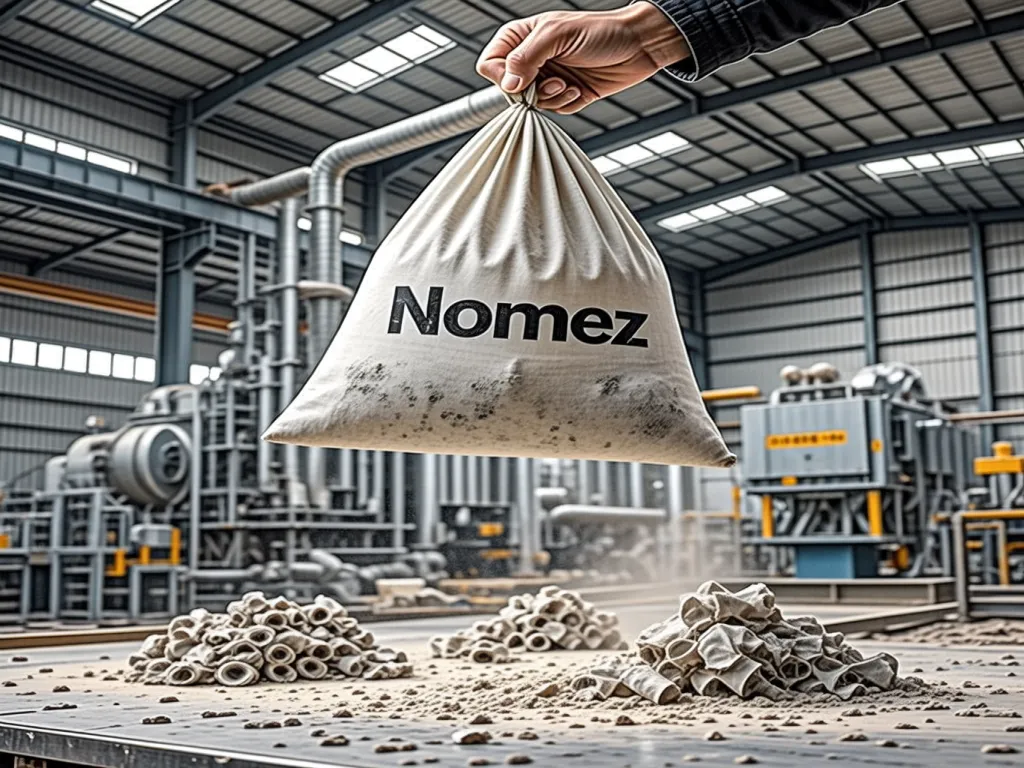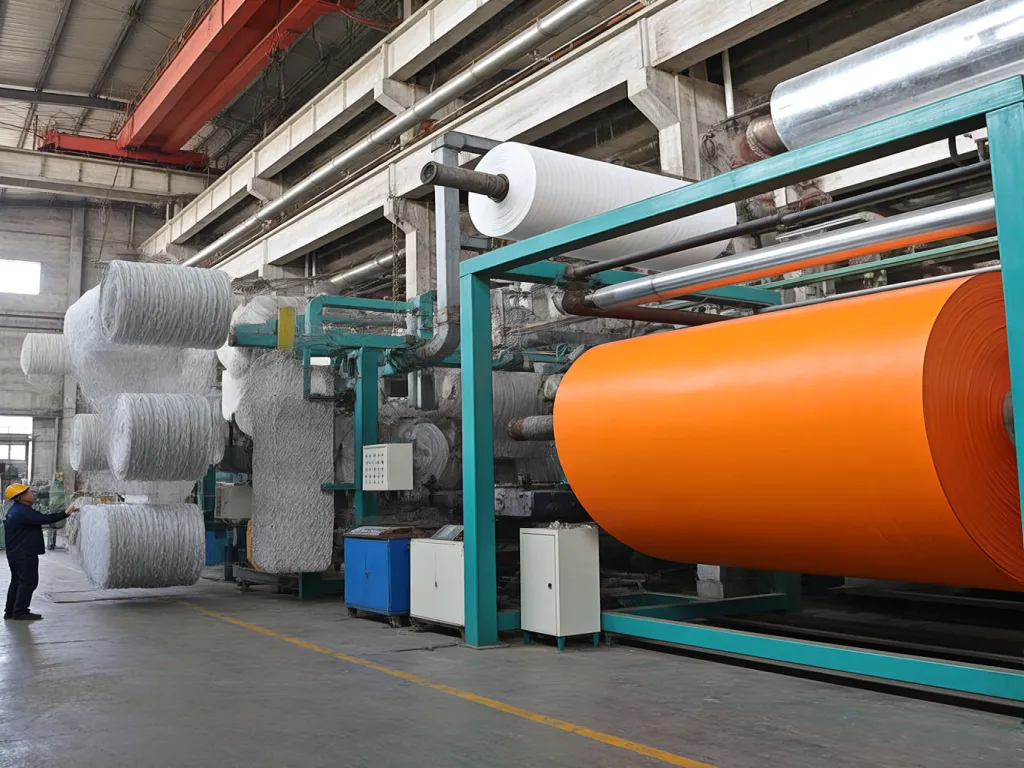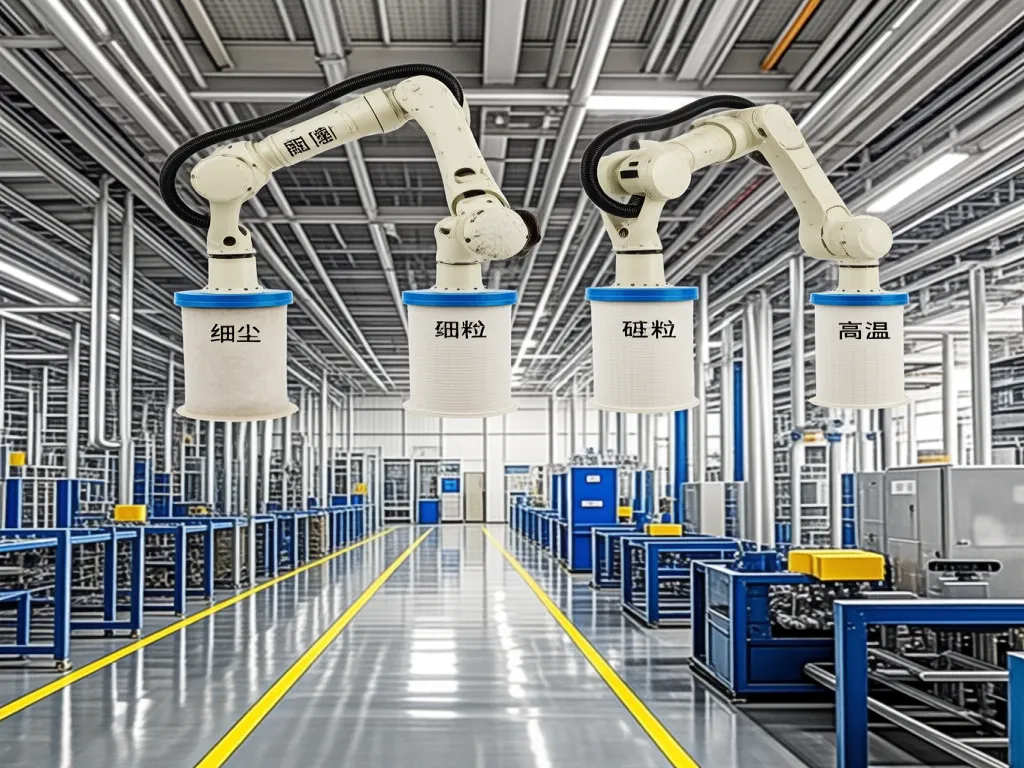Dust Characteristics Unveiled: Pick Right Filter Bags!
In the industrial world, the battle against dust is constant. Whether it’s fine particles floating in the air or coarse grits wreaking havoc on machinery, the right dust collection filter bags can make all the difference. But with so many options out there, how do you know which ones are truly up to the task? This blog dives deep into the Dust Characteristics Unveiled, offering tailored solutions for every industrial challenge. Ready to transform your dust collection game?

Fine Dust Filtration Challenges: Understanding Physical Traits and Filter Bag Solutions
When it comes to industrial filtration, dealing with fine dust presents unique challenges that require specialized solutions. Fine dust, often defined as particles smaller than 2.5 microns in diameter, behaves differently from larger particles due to its physical traits. These traits include not only their minuscule size but also their tendency to remain airborne for extended periods, making them elusive to capture with standard filtration methods. Let’s dive deeper into why fine dust filtration demands specific attention and how selecting the right dust collection filter bags can make all the difference.
Firstly, the small particle size of fine dust means it can easily penetrate through the pores of conventional filter media. Imagine trying to catch sand with a fishing net – that’s similar to using a standard filter bag for fine dust. The result? Reduced filtration efficiency and increased emissions, which can lead to environmental non-compliance and health hazards for workers.
Moreover, fine dust particles are lightweight and highly dispersible. They can linger in the air for hours, carried by even the slightest air currents. This makes them particularly challenging to capture and contain, especially in environments where air movement is constant, such as manufacturing facilities or processing plants.
So, what’s the solution? The answer lies in choosing dust collection filter bags specifically designed for fine dust filtration. These bags are crafted from materials and constructed with features that address the unique challenges posed by fine particles.
One of the most effective materials for fine dust filtration is polyester fiber. Polyester offers several advantages: it has a high surface area, which enhances particle capture; it’s chemically resistant, making it suitable for a wide range of industrial applications; and it’s relatively inexpensive compared to other specialized materials. For specific polyester filter bag options, consider exploring our wholesale polyester pocket filter bags or wholesale polyester dust collector filter bags. But why polyester? Well, its molecular structure allows for a tighter weave, creating smaller pores that can trap even the tiniest dust particles.
Now, let’s talk about structural design. High-density weaving is a critical feature in filter bags for fine dust. This technique involves packing more fibers into a given area, resulting in a denser, more compact fabric. The benefit? A tighter mesh that significantly reduces the likelihood of fine dust escaping through the pores. Think of it like upgrading from a chain-link fence to a solid wall – the denser the barrier, the fewer particles can get through.
But high-density weaving isn’t the only design consideration. Some filter bags incorporate a gradient density structure, where the outer layers have larger pores to capture coarser particles, while the inner layers have finer pores for trapping the smallest dust. This multi-layered approach ensures efficient filtration across the entire particle size spectrum.
Another innovative design is the use of a membrane layer. This thin, synthetic layer is bonded to the surface of the filter bag and acts as an additional barrier. The membrane has microscopic pores that are even smaller than those in the base fabric, providing an extra level of filtration for ultra-fine particles. For more advanced options, check out our PTFE-coated polyester dust filter bags, which offer enhanced filtration capabilities. It’s like adding a final filter stage to catch any stragglers that slipped through the initial layers.
But how do you know if a filter bag is truly designed for fine dust? Look for labels or specifications that mention ‘fine dust filtration’ or ‘sub-micron filtration.’ These indicate that the bag has been engineered to handle particles at the lower end of the size spectrum.
Now, you might be wondering, ‘Do I really need to invest in specialized filter bags for fine dust?’ The answer depends on your specific application. If your process generates significant amounts of fine dust, or if regulatory requirements demand strict emission controls, then yes – specialized bags are essential. They not only improve filtration efficiency but also extend the lifespan of your dust collector by reducing clogging and pressure drops. For industrial applications, our industry polyester dust collector filter bags are a great choice.
In conclusion, fine dust filtration is a nuanced challenge that requires a tailored approach. By understanding the physical traits of fine dust and selecting dust collection filter bags with the right materials (like polyester fiber) and structural designs (such as high-density weaving), you can achieve superior filtration performance. Remember, the goal isn’t just to capture dust – it’s to capture it effectively, efficiently, and safely. So, the next time you’re evaluating your filtration system, ask yourself: ‘Am I using the right tools for the job?’ With the insights from this guide, you’ll be well-equipped to make an informed decision.

Coarse Particle Dust Handling Strategies: Mitigating Wear on Dust Collection Filter Bags
When it comes to industrial dust collection, coarse particle dust presents a unique set of challenges. Unlike fine dust, which can be efficiently captured by high-density filter bags, coarse particles are larger, heavier, and more abrasive. This means they can cause significant wear and tear on your dust collection filter bags over time, leading to frequent replacements and increased operational costs. So, how can you tackle this issue head-on? Let’s dive into some effective strategies.
Firstly, understanding the nature of coarse particle dust is crucial. These particles, often ranging from a few micrometers to several millimeters in size, can be incredibly damaging to filter bags. They can act like tiny sandpaper grains, gradually wearing down the fabric fibers. This wear is exacerbated by the high velocity of airflow in dust collection systems, which propels these particles against the filter surface with considerable force.
To combat this, selecting the right material for your dust collection filter bags is paramount. One standout option is Nomex, a synthetic aramid fiber known for its exceptional durability and heat resistance. Nomex filter bags are designed to withstand the abrasive action of coarse particles, offering a longer service life compared to traditional materials. The secret lies in its high tensile strength and excellent resistance to tearing and puncturing, making it an ideal choice for environments where coarse dust is prevalent.
But material selection is just part of the equation. Reinforcing the design of your filter bags can further enhance their durability. One effective approach is to incorporate reinforced seams and edges. These areas are particularly vulnerable to wear, as they’re the points where the filter bag is attached to the collection system and where the airflow changes direction. By using stronger stitching techniques and adding extra layers of fabric at these critical points, you can significantly reduce the risk of premature failure.
Another design consideration is the use of a protective coating. Some filter bags are treated with a special coating that forms a barrier between the fabric and the coarse particles. This coating can help to reduce friction and abrasion, extending the life of the filter bag. While this may add a slight cost premium, the long-term savings in terms of reduced replacements and downtime can be substantial.
Now, you might be wondering, ‘How do I know if my current filter bags are up to the task?’ A good starting point is to assess the wear patterns on your existing bags. If you notice excessive thinning, tears, or holes, especially in areas of high airflow or where the bag connects to the system, it’s a clear sign that your filter bags are struggling with the coarse dust load. In such cases, upgrading to a more robust material like Nomex and incorporating reinforced designs can make a world of difference.
In conclusion, handling coarse particle dust effectively requires a multi-faceted approach. By selecting the right material, reinforcing critical design elements, and considering protective coatings, you can significantly extend the lifespan of your dust collection filter bags. This not only reduces your operational costs but also ensures a cleaner, safer working environment. So, are you ready to upgrade your filter bags and tackle coarse dust with confidence?
The Science Behind Coarse Particle Wear
Coarse particles, due to their size and weight, exert a greater force on the filter bag fabric compared to fine dust. This force, combined with the high-speed airflow in dust collection systems, creates a perfect storm for wear and tear. The particles act like tiny projectiles, hitting the fabric repeatedly and causing micro-tears that can eventually lead to larger failures. Understanding this mechanism is key to developing effective mitigation strategies.
Nomex: A Game-Changer in Dust Collection
Nomex’s unique properties make it an excellent choice for coarse particle dust handling. Its high tensile strength means it can withstand the constant pounding of coarse particles without breaking down. Additionally, its heat resistance ensures that even in high-temperature environments, the filter bag maintains its structural integrity. This combination of durability and heat resistance is what sets Nomex apart from other materials. For specific applications, such as cement plants, where dust loads can be particularly heavy, Nomex aramid filter bags can offer enhanced performance and longevity.
Design Reinforcements: Beyond Material Selection
While material selection is crucial, design reinforcements play an equally important role in extending filter bag life. Reinforced seams, for instance, prevent the bag from tearing at the points where it’s most vulnerable. Similarly, adding extra layers of fabric at the edges can help to distribute the force of impact more evenly, reducing the risk of puncturing. These small but significant design changes can make a big difference in the long run. For instance, incorporating reinforced seams and edges into needle felt filter bags can significantly enhance their durability in harsh environments.

High-Temperature Dust Filtration Solutions: Material Selection & Performance Enhancement
When it comes to industrial dust collection, high-temperature environments pose unique challenges. The heat isn’t just uncomfortable—it can degrade filter bags, leading to frequent replacements, downtime, and increased costs. So, how do you choose the right dust collection filter bags for high-temperature applications? Let’s dive into the science of material selection and performance enhancement.
First, let’s talk about glass fiber—a go-to material for high-temp dust collector filters.
Why glass fiber? The answer lies in its exceptional thermal stability. Glass fibers can withstand continuous operating temperatures up to 550°F (288°C), and in some cases, even higher with specialized formulations. This makes them ideal for industries like cement production, metal smelting, and boiler exhaust systems, where temperatures often soar. But temperature resistance isn’t the only factor. Glass fiber also offers excellent chemical resistance, which is crucial when dealing with corrosive gases or acidic particulates. Imagine a glass fiber filter bag working in a power plant’s flue gas system—it resists both the heat and the chemical attack, ensuring longevity. For a factory-direct option on polyester variants with similar durability, consider wholesale polyester pocket filter bags.
Now, you might wonder: ‘Is glass fiber the only option?’
Not exactly. Other materials like P84 (polyimide) and PTFE (polytetrafluoroethylene) also excel in high-temp scenarios. P84, for instance, can handle temperatures up to 500°F (260°C) and provides superior filtration efficiency due to its irregular fiber structure, which traps fine particles effectively. PTFE, on the other hand, is the king of chemical resistance and can operate up to 500°F (260°C) continuously, making it perfect for harsh chemical environments. For PTFE-coated options that enhance performance in such conditions, explore wholesale PTFE-coated polyester dust filter bags.
But here’s the kicker: even the best materials need a little extra help to perform at their peak in extreme conditions.
That’s where special treatments like coatings come into play. Coatings aren’t just for aesthetics—they’re functional layers that enhance a filter bag’s durability and performance. Take silicone coatings, for example. Applied to glass fiber filter bags, silicone creates a smooth, heat-resistant surface that reduces particle adhesion. This means less clogging and easier cleaning during pulse-jet cleaning cycles. In a foundry setting, where dust is abrasive and temperatures are high, a silicone-coated glass fiber bag can last significantly longer than an uncoated one.
Another popular coating is PTFE membrane.
This thin, porous layer acts as a barrier, preventing fine particles from embedding into the filter media while allowing air to pass through. The result? Lower pressure drop and higher airflow efficiency. For industries like pharmaceuticals or food processing, where cleanliness is paramount, PTFE-coated filter bags ensure compliance with strict hygiene standards while handling high-temp exhaust.
Then there’s acrylic coating, which balances cost and performance.
It provides moderate heat resistance (up to 350°F/177°C) and improves abrasion resistance, making it suitable for medium-temperature applications like woodworking or baking ovens. For a cost-effective solution in polyester with acrylic coating, consider wholesale polyester dust collector filter bags.
But how do you decide which coating or material is right for your operation?
Start by assessing your temperature range. If your system consistently runs above 400°F (204°C), glass fiber or P84 with a high-temp coating like silicone is your best bet. For temperatures below 350°F (177°C), acrylic-coated polyester might suffice. Next, consider the dust type. Abrasive dusts (like sand or metal shavings) demand materials with high abrasion resistance, such as glass fiber with a thick silicone coating. Sticky or oily dusts (common in food processing) benefit from PTFE coatings, which prevent clogging.
Finally, factor in your maintenance capabilities.
Coated filter bags reduce cleaning frequency, but they cost more upfront. If your team can handle frequent bag changes, a less expensive uncoated option might work. But if downtime is costly, investing in coated bags pays off in the long run. For specialized applications requiring felt-based solutions, wholesale FMS felt filter bags offer durability and efficiency.
In the end, choosing the right high-temp dust collection filter bags isn’t just about picking a material—
it’s about understanding how materials and coatings work together to meet your specific needs. By selecting the right combination, you’ll ensure efficient filtration, reduced maintenance, and longer bag life, even in the toughest environments.
Selecting the ideal dust collection filter bags isn’t just about buying a product; it’s about investing in efficiency and longevity for your industrial operations. By understanding the unique demands of fine dust filtration, coarse particle control, and high-temperature environments, you can make informed choices that boost productivity and cut down on maintenance costs. Remember, the right filter bags tailored to specific dust types are your secret weapon in the fight against industrial dust. So, why wait? Equip your facilities with the best dust collection solutions today and watch your operations soar to new heights of efficiency!


